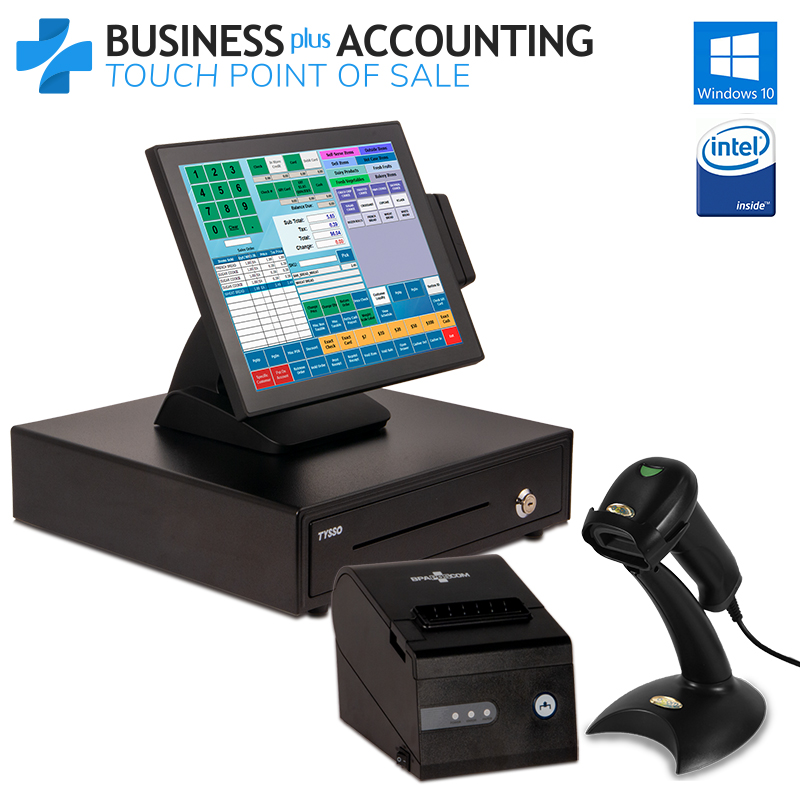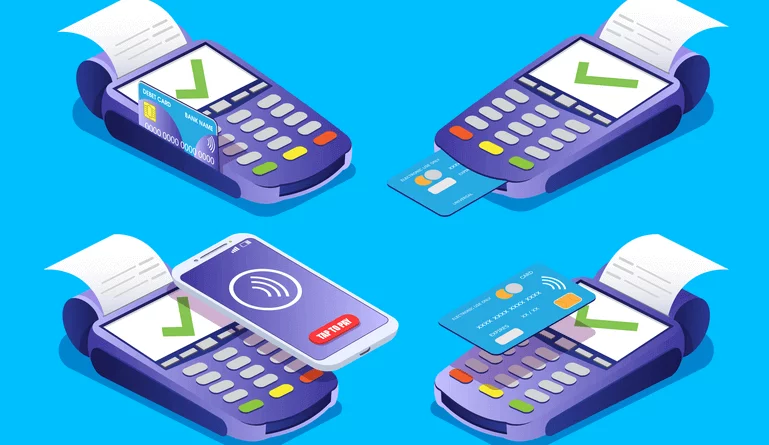Cloud Retail POS System: Evaluating Cloud-Based and Conventional Point of Sales Systems
POS System for Supermarket: A Sales Management Service Designed To Simplify Deals For Little Enterprises
Features and Benefits
When diving into the world of a Point Of Sales System for little company, it's not practically calling sales. What truly sets these systems apart is the rich tapestry of functions woven into their style, each crafted to raise the daily grind of a little service owner. Imagine a tool that not just tracks sales but likewise checks out the pulse of your stock like an experienced detective. Intriguing, ideal?
Core Functions That Transform Daily Operations
- Stock Management: Gone are the days of frantic stock checks. Modern POS systems immediately upgrade your inventory, informing you when items run low. It's as if your system whispers, "Hey, time to reorder!" before you even understand it.
- Sales Reporting: Numbers can be challenging, but a good POS system presents sales data in clear, digestible formats. Charts, graphs, and real-time dashboards make it easy to spot trends and make informed choices.
- Employee Management: Scheduling shifts and tracking hours end up being smooth. This feature not just saves time but decreases human mistake, a continuous thorn in the side of small company owners handling lots of hats.
- Consumer Relationship Management (CRM): Picture understanding your customers along with your buddies. POS systems can store client preferences and purchase history, making it possible for tailored marketing that feels genuine, not required.
Benefits That Talk To the Heart of Small Service Needs
Why do these functions matter? Since behind every deal is a story, and a well-designed POS system helps you inform it better. It's not practically effectiveness; it has to do with empowering you to focus on what truly matters-- your consumers and development.
| Feature | Benefit | Effect on Company |
|---|---|---|
| Real-time Inventory Updates | Prevents stockouts and overstocking | Enhances capital and customer satisfaction |
| Detailed Sales Analytics | Identifies best-selling items and peak hours | Informs marketing and staffing strategies |
| Integrated Payment Processing | Accelerate checkout and lowers mistakes | Improves customer experience and builds trust |
| Client Data Management | Allows targeted promos and loyalty programs | Boosts repeat company and customer retention |
Ever Wondered How This Plays Out in Real Life?
Picture a quaint coffeehouse owner, juggling orders throughout an early morning rush. The POS system not just processes payments promptly but alerts her to a dwindling supply of her signature beans. She reorders perfectly, preventing a consumer frustration. Little minutes like this, powered by smart innovation, become the unsung heroes of business success.
Could your small company love a tool that feels more like a partner than simply a machine? The best Point Of Sales System does not just manage transactions-- it tells the story of your service, unlocking prospective hidden in daily data.
Checking out the Kinds Of Point Of Sales Systems for Small company
Envision walking into a dynamic coffee shop, the barista balancing orders while the register sings the tune of smooth transactions. Behind that consistency lies the choice of a POS system, tailored to fit the rhythm of the service. What kinds of systems really empower small businesses to grow? Let's dissect the landscape.
1. Conventional POS Systems
These are the strong old-timers, often hardware-heavy and locally installed. They boast robust performance however in some cases seem like carrying a typewriter into the digital age. While they offer reliability, their rigidity can journey up organizations yearning dexterity and remote gain access to.
- Pros: Quick processing, offline ability, thorough inventory management.
- Cons: Preliminary hardware investment, minimal versatility for scaling or mobility.
2. Cloud-Based POS Systems
Think about these as the nimble acrobats of the POS world. Cloud-based systems operate by means of internet, enabling entrepreneurs All-in-One POS System to manage sales and inventory from virtually anywhere. This liberty, however, dances in tandem with dependency on steady internet connections-- a double-edged sword for some.
- Benefits: Real-time updates, scalability, combination with several gadgets.
- Drawbacks: Vulnerability during internet interruptions, continuous membership charges.
3. Mobile POS Solutions
Have you ever stood in line at a farmer's market, viewed a vendor call sales on a tablet, and wondered how that magic occurs? Mobile POS systems turn smart devices and tablets into potent sales tools. They shine in environments where movement and versatility eclipse the requirement for bulky terminals.
- Perfect for pop-ups, food trucks, and small retail shops.
- Integrates with payment entrances and supports quick checkouts.
- Bear in mind: Smaller sized screen sizes can often limit sophisticated stock tracking.
4. Self-Service Kiosks
Automation steps in with self-service kiosks, transforming client interaction. While more common in bigger setups, little services checking out ingenious client engagement might consider scaled-down versions.
- Minimizes wait times and frees personnel for other tasks.
- Needs thoughtful UX design to prevent user aggravation.
| Type | Best Matched For | Secret Function | Potential Limitation |
|---|---|---|---|
| Traditional POS | Developed brick-and-mortar shops | Offline deals | Hardware expenses |
| Cloud-Based POS | Services requiring remote access | Real-time data syncing | Web reliance |
| Mobile POS | Mobile suppliers and pop-ups | Portability | Minimal screen area |
| Self-Service Kiosks | Customer-centric environments | Automation | Style complexity |
Do you ever question why some small companies appear to move easily through their sales procedure while others stumble over simple jobs? The kind of POS system chosen typically fixes a limit between smooth cruising and operational headaches. Picking a system without thinking about the particular workflow can result in missed sales or stock turmoil. A florist juggling seasonal items might find conventional inventory modules clunky, whereas a cloud-based setup provides vibrant updates and multi-device gain access to.
Pro suggestion: Delve into the nuances of combination abilities. A POS system that syncs with your accounting software and inventory management can conserve hours of manual labor every week. Remember, the goal is to streamline. If the system seems like a barrier, it probably is.
Application and Setup
Envision standing in your small store, surrounded by curious customers, while your brand-new Point of Sales System blinks calmly on the counter. The adventure of modern technology meets the reality of getting it up and running. How does one leap from the enjoyment of purchase to smooth operation?
Setting up a POS system for little organization isn't almost plugging in hardware and clicking through software application prompts. It's a detailed dance, where every step needs to be exact to prevent missteps that ripple through everyday operations.
Secret Steps to a Smooth Setup
- Stock Integration: Before you scan your first product, ensure your stock database is tidy and extensive. Replicate entries or missing out on SKUs can cause mayhem throughout deals.
- Hardware Configuration: Link peripherals like barcode scanners, receipt printers, and money drawers thoroughly. Take note of USB port assignments and driver setups-- an overlooked information here can stall your workflow.
- User Access Levels: Define clear functions within the system to prevent unintentional overrides or unapproved refunds. A well-structured user hierarchy safeguards your sales information's integrity.
- Tax and Prices Guidelines: Customize tax rates and discount rate structures to reflect regional regulations and your marketing plans. Automated calculations prevent pricey manual mistakes.
- Test Deals: Run several circumstances mimicking real sales to identify any problems or bottlenecks. Do not ignore this step-- it conserves headaches later.
Professional Tips for Efficient Execution
- Backup existing sales and inventory information before migrating to the brand-new system, just in case.
- Use batch import features for stock data; manual input is a dish for errors.
- Consider the workflow from both the cashier's and the customer's viewpoint when arranging your checkout interface.
- Label cable televisions and devices during setup to simplify troubleshooting and future upgrades.
- Arrange installation during off-hours to avoid interrupting peak service times.
Common Setup Snags to Look For
| Problem | Effect | Avoidance |
|---|---|---|
| Inaccurate tax settings | Overcharging or undercharging customers | Validate local tax codes and upgrade system accordingly |
| Hardware incompatibility | Peripheral gadgets stop working to run | Examine gadget compatibility before purchase |
| User consent errors | Unapproved access or accidental information deletion | Set strict gain access to controls and audit routinely |

Have you ever questioned why some POS setups feel instinctive while others appear to journey you up at every turn? The secret lies in expecting the unseen snags and crafting your setup with insight. A well-executed implementation not only accelerates sales however changes your small company's daily rhythm into a streamlined symphony.
Security and Compliance Considerations
Think of getting up one morning to find your point of sales system has actually been breached overnight. Consumer information exposed, deals compromised, and your small business's reputation teetering on the edge. It's a circumstance no entrepreneur desires to face, yet numerous ignore the subtle vulnerabilities that lurk in their POS infrastructure.
At the heart of every safe and secure POS system lies encryption. Not simply any file encryption, but end-to-end encryption that scrambles cardholder data from the minute it's swiped up until it reaches the payment processor. Without this, sensitive info can fall prey to cyber eavesdroppers or hackers hiding in the network shadows.
Secret Security Practices to Strengthen Your POS
- Routine software updates: Out-of-date software resembles leaving your backdoor broad open. Frequent updates spot recently discovered vulnerabilities that cybercriminals fast to exploit.
- Strong authentication protocols: Use multi-factor authentication wherever possible. An easy password won't suffice anymore-- layered security is the new norm.
- Network segmentation: Keep your POS system isolated from other company networks. This separation restricts the spread of malware and unauthorized gain access to.
Compliance isn't simply about ticking boxes-- it's a non-negotiable framework that guarantees you're managing payment information properly. The Payment Card Industry Data Security Standard (PCI DSS) is frequently concerned as the gold requirement for POS compliance, but small companies regularly underestimate the depth of its requirements.
For circumstances, did you know that keeping cardholder data beyond what's absolutely necessary can immediately put you out of compliance? Many little business owners unwittingly keep deal logs with delicate information for benefit, unintentionally welcoming regulative examination.
Compliance Checklist for Small Service POS Systems
| Requirement | Why It Matters | Pro Pointer |
|---|---|---|
| Secure transmission of cardholder data | Prevents interception during payment processing | Use TLS 1.2 or greater for safe communication |
| Preserve a protected network | Blocks unapproved gain access to efforts | Change default system passwords right away after setup |
| Implement access controls | Limitations who can see or process payment data | Assign role-based consents customized to task functions |
| Screen and test networks regularly | Finds breaches before they become disastrous | Arrange quarterly vulnerability scans and penetration tests |

Ever wondered why some small companies recuperate quickly after a security scare, while others collapse? The difference depends on proactive steps and comprehending the subtle intricacies of point of sale security. Basic steps like disabling unused services on your POS gadget can considerably minimize direct exposure.
Keep in mind that compliance is a moving target. Laws evolve, cyber risks alter, and what was safe the other day may be outdated tomorrow. Stay curious, stay alert, and never ever presume your system is too little to be discovered.